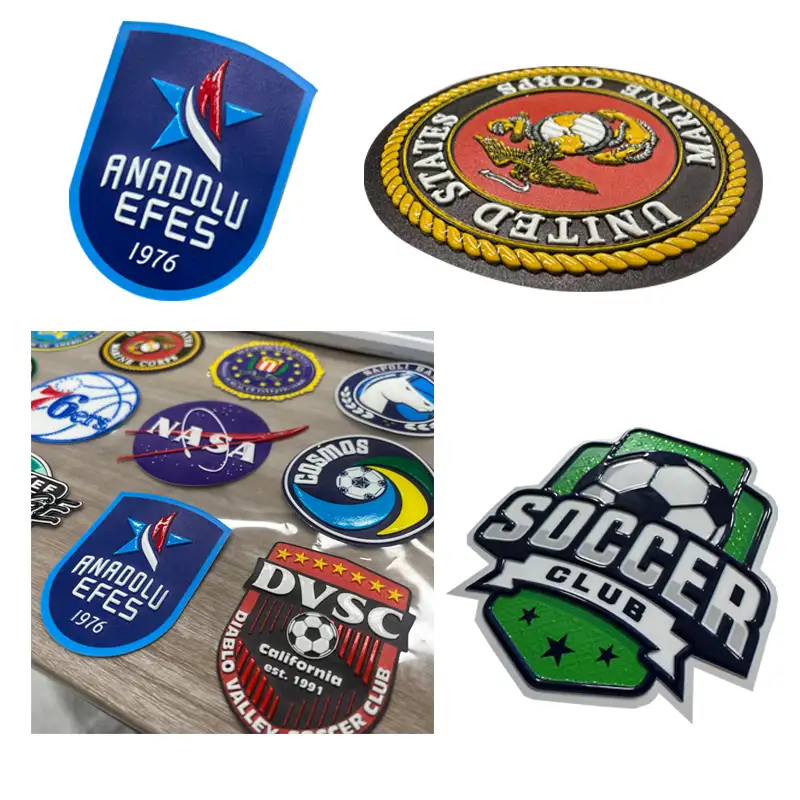Print buyers want more than color. They want depth, shine, and a luxury feel. A UV flatbed printer with varnish delivers this. The effect makes designs pop and adds value to every product.
This guide explains how to correctly print varnish effect with UV flatbed printer. It covers setup, materials, and daily care. If you sell custom T-shirts or promotional goods, this will help you get premium results.
What Is the Varnish Effect?
Varnish is a clear coating. Printers apply it on top of colors. The result can be glossy, matte, or textured.
The varnish effect adds:
- Shine that highlights logos and text
- Raised surfaces for tactile appeal
- Extra protection against scratches
What Is a Fake Silicone Label?


Fake Silicone Label (Imitation Silicone)
This is one of our imitation silicone labels — a purely digital-printed product made with fake silicone label printing technology.
Take a look at the overall effect: it has a strong 3D texture, available in both glossy and matte finishes, and can even be made in gold or silver, with fine surface details.
The process starts with fake silicone label printing.
We print the white base, full-color layers, and gloss varnish—all completed by our printer.
Every bit of thickness, texture, and shine is created through printing alone, without any real silicone materials.
After printing, the design is precisely cut with a cutting machine.
The material itself comes with a built-in hot-melt adhesive.
We cut each small logo or pattern piece by piece, making it perfect for fake silicone logo for clothing and accessories.
Next, we use a heat press to apply the logo.
Set the heat press machine temperature to 160°C,
apply 4 kg of pressure,
and press for about 20 seconds.
This step completes the fake silicone heat transfer logo process.
The label will adhere firmly to garments, shoes, hats, or any fabric surface.
It’s a modern replacement for traditional silicone or rubber patches — durable, flexible, and easy to apply.
Why Use a UV Flatbed Printer for Varnish?
UV flatbed printers cure ink with UV light. They can print color and varnish in one job.
Key advantages:
- Works on fabric, plastic, wood, and glass
- No need for screens or plates
- Fast setup for short runs
- Accurate layering for spot varnish
For custom T-shirt shops, this means fast delivery with premium style. Buyers notice the difference.

Steps: How to Correctly Print Varnish Effect with UV Flatbed Printer
1. Prepare the Design
- Add a separate varnish layer in your file.
- Mark areas for gloss or texture.
- Use vector paths for sharp edges.
2. Check the Substrate
- Make sure the fabric or surface is clean.
- Avoid dust, oil, or moisture.
- Test print on a sample piece first.
3. Adjust Print Settings
- Select the varnish channel in the RIP software.
- Set ink thickness based on material.
- Choose gloss or matte finish.
4. Print and Cure
- Run a test pass with low speed.
- Cure varnish with full UV light.
- Inspect the raised effect for balance.
Varnish Thickness Guide
The thickness of varnish affects the look and feel.
| Thickness Range | Application | Result |
|---|---|---|
| 5–10 µm | Fine text | Subtle shine |
| 15–30 µm | Logos, lines | Glossy finish |
| 40–80 µm | Patterns, textures | Raised 3D effect |
Advantages of Using Varnish
- Premium finish for high-value products
- Protection against wear and tear
- Works on many materials
- Adds depth to simple designs
- Improves customer perception
Daily Maintenance Tips
A UV flatbed printer runs best with routine care.
- Clean print heads every day
- Wipe dust from the bed surface
- Use only recommended UV inks
- Run test prints before big jobs
- Store varnish ink in a cool, dry place
These steps extend printer life and ensure consistent gloss.
Conclusion
Knowing how to correctly print varnish effect with UV flatbed printer gives your shop an edge. The process is simple, but it requires discipline. Prepare the file, check the surface, set thickness, and cure it right.
With varnish, you sell more than a T-shirt. You sell style, durability, and value.




